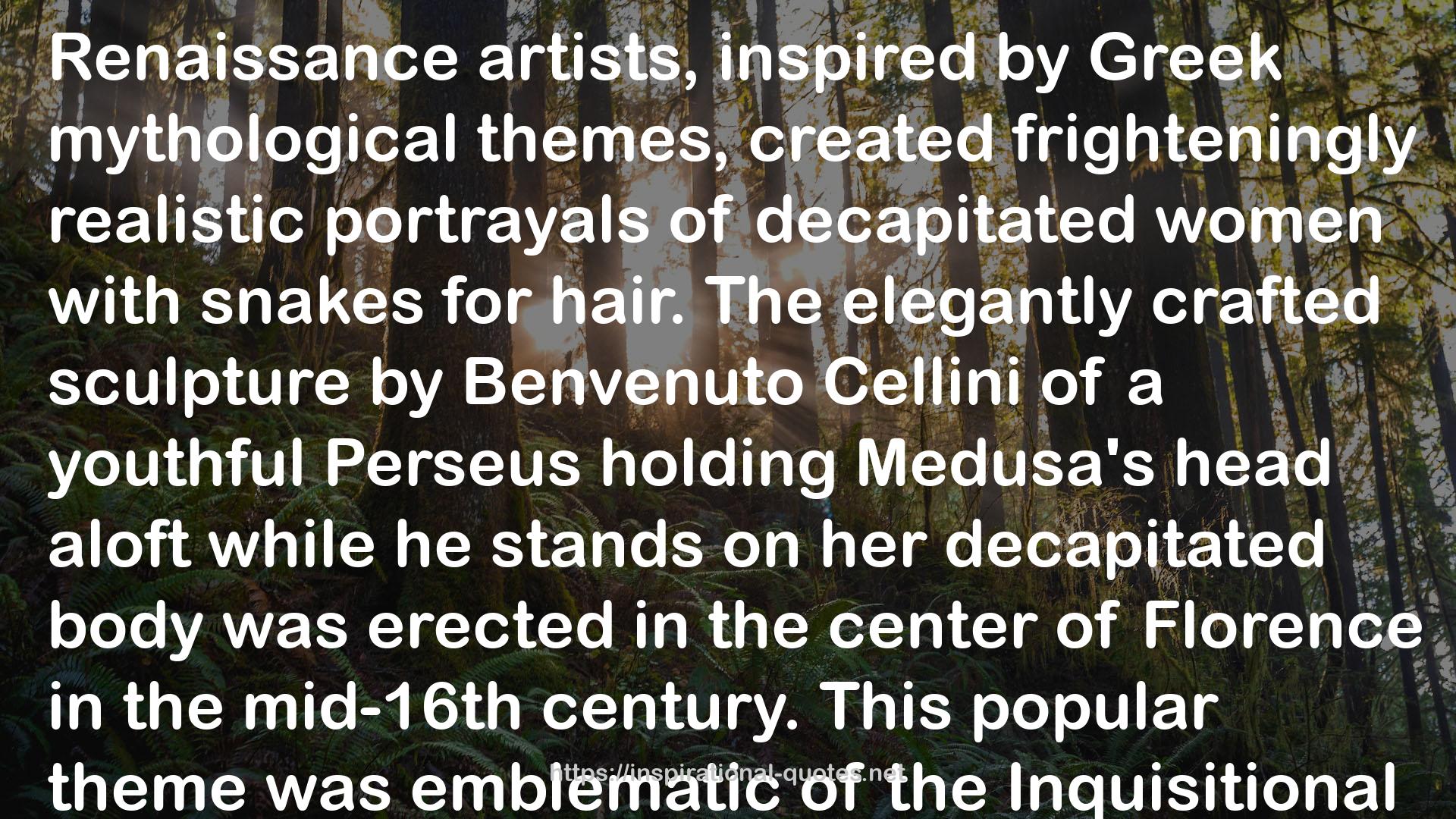" Renaissance artists, inspired by Greek mythological themes, created frighteningly realistic portrayals of decapitated women with snakes for hair. The elegantly crafted sculpture by Benvenuto Cellini of a youthful Perseus holding Medusa's head aloft while he stands on her decapitated body was erected in the center of Florence in the mid-16th century. This popular theme was emblematic of the Inquisitional murders of women taking place in many areas of Europe during that time, considered necessary to protect civil society from the dangers of uncontrolled female powers. Later, during the 18th-19th centuries, Romantic artists, poets, and Decadents recast Medusa as a beautiful victim, not a monster. In their view, She represented the ecstatic discord between pain and pleasure, beauty and horror, and divinely forbidden sexuality. "
― Joan Marler, , Re-visioning Medusa: from Monster to Divine Wisdom
